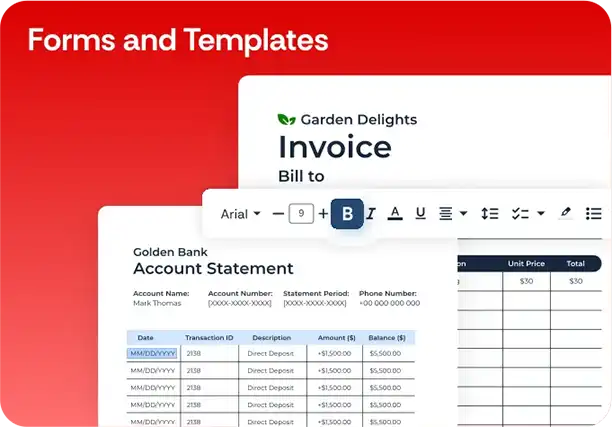1099 C Tax PDF Template
Stop searching and find out why people love the ease of creating beautiful and legally compliant 1099 C Tax PDF with PDFSimpli.

Stop searching and find out why people love the ease of creating beautiful and legally compliant 1099 C Tax PDF with PDFSimpli.





[toc] When you’re filing your taxes, a 1099-C form is different from your normal 1099. The 1099-C is used to denote cancellation of debt. This form will generally be received from a lender after you negotiate a cancellation of your debt with them. The amount of your debt must be reported to the IRS as taxable income using this form.
A 1099-C form serves a few different purposes. First, it notifies the IRS that you’ve negotiated a debt cancellation with a lender. Second, it allows you to note the amount of the cancelled debt as income, which the IRS can then tax. If you no longer owe the money, the IRS considers this to be the same as receiving that sum of money. This can sometimes make things difficult, especially if you can’t afford a large tax bill.
When you borrow money from any lender, no matter what the money is for, you’re not required to pay taxes on that income because you’re expected to pay said income back. If you aren’t expected to pay the income back anymore, it goes into your pocket; by IRS definitions, it’s then taxable.
Almost every debt that is forgiven or canceled is then converted into taxable income. The lender who forgave your debt will send you the 1099-C form. You might receive this form when an asset is repossessed, your home is foreclosed, you returned property to a lender, or you modified a home loan.
Anyone who has had a debt cancelled or forgiven in the past fiscal year should use the 1099-C tax form to note this. The lender has an obligation to send the borrower the form, and the borrower has an obligation to file it with their other tax paperwork.
Because of the housing crisis that occurred between 2007 and 2017, if you have a mortgage debt forgiven, you can exclude it from your taxable income in the following circumstances:
The debt does not exceed $2 million, provided you were married and filing jointly
The debt does not exceed $1 million, provided you had a single or married and filing separately status
Your mortgage debt was forgiven through the use of a mortgage restructuring
Your home was foreclosed upon
These circumstances are outlined in the Mortgage Forgiveness Debt Relief Act, which Congress passed in 2007.
If you have had a debt canceled, the lender will send you the 1099-C tax form. You’ll be required to fill it out and file it with the rest of your tax return paperwork. The amount of forgiven debt will be added to your yearly income, and taxes will be calculated based on that.
All forgiven debts are eligible for taxation except debts that apply to the circumstances outlined in the Mortgage Forgiveness Debt Relief Act. You might also have a tax exemption if the debt’s discharge happened during a Title 11 bankruptcy case.
Similarly, if you can provide proof that the cancellation was related to insolvency, you can have your tax debt forgiven. There are some other minor circumstances that can avoid taxation, including farm indebtedness that meets certain qualifications. If you aren’t sure whether your tax burden can be forgiven, you might want to have a qualified tax attorney review the details of your case.
If you’re sent a 1099-C form by a lender, and you don’t meet any of the qualifications for tax exemption, you must note the forgiven debt as taxable income. Failure to do so could result in hefty penalties from the IRS. If you’ve made a mistake with your first tax filing, you should send in a corrected filing to fix the problem. [pdf-embedder url=”https://cdn-prod-pdfsimpli-wpcontent.azureedge.net/pdfseoforms/pdf-20180219t134432z-001/pdf/1099-c-tax-form.pdf”]
Fill out the name of the creditor, their street address, and their telephone number.
Fill out the date that the debt was forgiven.
Include the amount of debt that was discharged, along with any interest included in this figure.
Describe the type of debt.
Check box 5 if the debtor bore personal responsibility for repaying the debt.
Note the code for debt forgiveness on section 6.
Note the current value of property on the fair market.
Write the debtor’s name, street address, and account number. The account number will be noted based on the attached instructions.
Everyone is capable of making minor mistakes on their tax forms. If you receive a Form 1099-C, you have two options: You can add the amount to your income, or you can explain to the IRS why the amount must be excluded. If you disagree with the 1099-C, it’s important to get in contact with the issuer as soon as possible. The creditor must either justify their numbers or send you a corrected form.
When a debt is discharged because of bankruptcy, there are no consequences for your income tax. The forgiven debt has been excluded from the gross income estimation. Sometimes you’ll still receive a 1099-C form, in which case you’ll need to file a Form 982 with the IRS.
If you’re confused by the amounts on your 1099-C, it’s a good idea to get the second opinion of an accountant. This accountant should understand the details regarding your financial situation. They should be well-versed in tax law and debt negotiations.